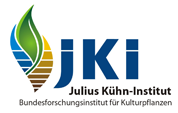- Themen >
- Wildbienen >
- Bestäubung >
- Quellen
verwendete Quellen
Aebi, A., B.E. Vaissière, D. van Engelsdorp, K.S. Delaplane, D.W. Roubik & P. Neumann (2012): Back to the future: Apis versus non-Apis pollination. – Trends in Ecology and Evolution 27: 142-143.
Bartomeus, I., S.G. Potts, I. Steffan-Dewenter, B.E. Vaissière, M. Woyciechowski, K.M. Krewenka, T. Tscheulin, S.P.M. Roberts, H. Szentgyörgyi, C. Westphal & R. Bommarco (2013): Contribution of insect pollinators to crop yield and quality varies with agricultural intensification. – PeerJ PrePrints.
Biesmeijer, J.C., S.P.M. Roberts, M. Reemer, R. Ohlemüller, M. Edwards, T. Peeters, A.P. Schaffers, S.G. Potts, R. Kleukers, C.D. Thomas, J. Settele & W.E. Kunin (2006): Parallel Declines in Pollinators and Insect-Pollinated Plants in Britain and the Netherlands. – Science 313: 351-354.
Breeze, T.D., A.P. Bailey, K.G. Balcombe & S.G. Potts (2011): Pollination services in the UK: How important are honeybees? – Agriculture, Ecosystems and Environment 142: 137-143.
Dorn, M. & D. Weber (1988): Die Luzerne-Blattschneiderbiene und ihre Verwandten in Mitteleuropa. – Neue Brehm-Bücherei 582; Wittenberg (A. Ziemsen), 110 S.
Gallai, N., J.M. Salles, J. Settele & B.E. Vaissière (2009): Economic valuation of the vulnerability of world agriculture confronted with pollinator decline. – Ecological Economy 68: 810-821.
Garibaldi, L.A., I. Steffan-Dewenter, C. Kremen, J.M. Morales, R. Bommarco, S.A. Cunningham, L.G. Carvalheiro, N.P. Chacoff, J.H. Dudenhöffer, S.S. Greenleaf, A. Holzschuh, R. Isaacs, K. Krewenka, Y. Mandelik, M.M. Mayfield, M.M. Morandin, S.G. Potts, T.H. Ricketts, H. Szentgyorgyi, B.F. Viana, C. Westphal, R. Winfree & A.M. Klein (2011): Stability of pollination services decreases with isolation from natural areas despite honey bee visits. – Ecology Letters 14: 1062-1072.
Garibaldi, L.A., I. Steffan-Dewenter, R. Winfree, M.A. Aizen, R. Bommarco, S.A. Cunningham, C. Kremen, L.G. Carvalheiro, L.D. Harder, O. Afik, I. Bartomeus, F. Benjamin, V. Boreux, D. Cariveua, N.P. Chacoff, J.H. Dudenhöffer, B.M. Freitas, J. Ghazoul, S. Greenleaf, J. Hipolito, A. Holzschuh, B. Howlett, R. Isaacs, S.K. Javorek, C.M. Kennedy, K.M. Krewenka, S. Krishnan, Y. Mandelik, M.M. Mayfield, I. Motzke, T.Munyuli, B.A. Nault, M. Otieno, J. Petersen, G. Pisanty, S.G. Potts, R. Rader, T.H. Ricketts, M. Rundlöf, C.L. Seymour, C. Schüepp, H. Szentgyörgyi, H. Taki, T. Tscharntke, C.H. Vergara, B.F. Viana, T.C. Wagner, C. Westphal, N. Williams & A.M. Klein (2013): Wild Pollinators Enhance Fruit Set of Crops Regardless of Honey Bee Abundance. – Science 339: 1608-1611.
Greenleaf, S.S. & C. Kremen, C. (2006): Wild bees enhance honey bees’ pollination of hybrid sunflower. – Proceedings of the National Academy of Sciences 103: 13890-13895.
Holzschuh, A., J.-H. Dudenhöffer & T. Tscharntke (2012): Landscapes with wild bee habitats enhance pollination, fruit set and yield of sweet cherry. – Biological Conservation 153: 101-107.
Klein, A.M., I. Steffan-Dewenter & T. Tscharntke (2003): Fruit set of highland coffee increases with the diversity of pollinating bees. – Proceedings of the Royal Society B: Biological Sciences 270: 955-961.
Klein, A.M., B.E. Vaissière, J.H. Cane, I. Steffan-Dewenter, S.A. Cunningham, C. Kremen & T. Tscharntke (2007): Importance of pollinators in changing landscapes for world crops. – Proceedings of the Royal Society B: Biological Sciences 274: 303-313.
Ollerton, J., R. Winfree & S. Tarrant (2011): How many flowering plants are pollinated by animals. – Oikos 120: 321-326.
Potts, S.G., J.C. Biesmeijer, C. Kremen, P. Neumann, O. Schweiger & W.E. Kunin (2010): Global pollinator declines: trends, impacts and drivers. – Trends in Ecology and Evolution 25: 345-353.
Ricketts, T.H., J. Regetz, I. Steffan-Dewenter, S.A. Cunningham, C. Kremen, A. Bogdanski, B. Gemmill-Herren, S.S. Greenleaf, A.M. Klein, M.M. Mayfield, L.A. Morandin, A. Ochieng’ & B. Viana (2008): Landscape effects on crop pollination services: are there general patterns? – Ecology Letters 11: 499-515.
Schindler, M. & B. Peters (2011): Eignen sich die Mauerbienen Osmia bicornis und Osmia cornuta als Bestäuber im Obstbau? – Erwerbs-Obstbau 52: 111-116.
Vincens, N. & J. Bosch (2000a): Pollinating efficacy of Osmia cornuta and Apis mellifera (Hymenoptera: Megachilidae, Apidae) on “Red Delicious” apple. – Environmental Entomology 29: 235-240.
Vincens, N. & J. Bosch (2000b): Weather-dependent pollinator activity in an apple orchard, with special reference to Osmia cornuta and Apis mellifera (Hymenoptera: Megachilidae and Apidae). – Physiological and chemical ecology 29 (3): 413-420.
Westrich, P. (1989): Die Wildbienen Baden-Württembergs. – Stuttgart (Ulmer-Verlag), Bd. I u. II, 972 S.




